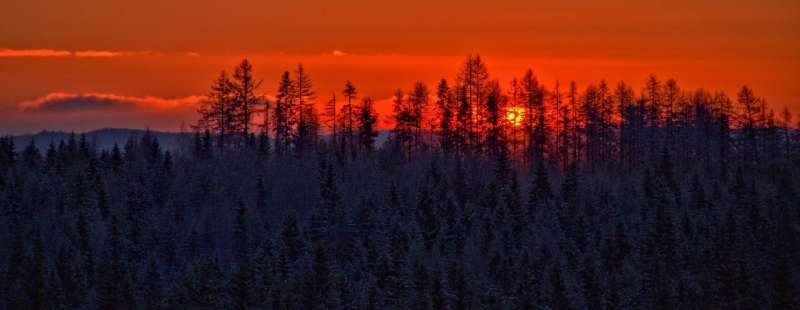Trees at nighttime trigger formation of charged particles

Understanding how climate has changed over the last centuries and will evolve in the future requires a detailed knowledge of all the climate system components, including an accurate evaluation of the effect of human activity on those.
Assessing the effect of human activity and aerosol particles in the climate machine
The presence of aerosol particles in the atmosphere is known to affect the climate, as, besides their interaction with solar radiation, they can also serve as seeds for the formation of cloud droplets. The formation of cluster particles from gaseous precursors and their subsequent growth has been reported to be a major source of particles; however, the identification of the mechanisms or the vapours involved is still not complete.
"Also, in order to assess the effect of human activity on climate, it is necessary to compare present climate with that of the preindustrial era, which means we need an accurate representation of the preindustrial conditions, including aerosol particles and their sources," Clémence Rose, the principal writer of an article on observations of biogenic ion-induced cluster formation in the atmospher recently published says.
Sulfuric acid, the production of which is to a large extent related to anthropogenic activities, has been commonly accepted to be essential in the initial steps of new particle formation.
However, the ability of organic vapours emitted by trees, biogenic vapours, to also form particles was recently evidenced during experiments conducted in the CLOUD chamber at CERN. These findings suggest that such process might have dominated new particle formation in the preindustrial era, when sulfuric acid concentrations where much lower.
"While chamber experiments allow for detailed investigations of individual mechanisms and can also well mimic atmospheric observations, they cannot fully reproduce the complexity of the real atmosphere", Clémence Rose says.
Aerosol formation from trees emitting: from laboratory to field
Following the aforementioned observations at CERN, the aim of the now published work was to investigate the occurrence of charged cluster formation from biogenic vapours in the atmosphere.
For that, data collected at the SMEAR II station in Hyytiälä, Finland, with a state of the art instrumental setup were analysed, providing information on both the size and concentration of the cluster particles as well as their chemical composition. A specific focus was put on evening time cluster formation, occurring in conditions which resemble those of the CLOUD chamber experiments at close proximity. As noticed earlier in CLOUD, biogenic vapours were also evidenced to dominate the early stages of the charged cluster formation during the evening time events observed in Hyytiälä.
In specific, the vapours resulting from the oxidation of monoterpenes, the main biogenic vapour emitted in the boreal forest, by ozone were shown to be the most efficient in forming and growing the clusters up to 6 nanometres after which their growth was interrupted because of the lack of photochemistry and essential vapours in the evening.
However, these results do not preclude the possibility for atmospheric clusters to grow further—up to sizes at which they can assist cloud formation—in a system dominated by biogenic vapours when photochemistry is active and produces enough vapours needed to sustain particle growth.
"Assessing the effect of such cluster formation pathways on a global scale will require multiple observations, and this pioneer work should encourage similar studies, including for instance the analysis of daytime cluster formation events detected in pristine environments such as e.g. the Amazon forest," says Clémence Rose.
More information: Clémence Rose et al. Observations of biogenic ion-induced cluster formation in the atmosphere, Science Advances (2018). DOI: 10.1126/sciadv.aar5218
Journal information: Science Advances
Provided by University of Helsinki


















